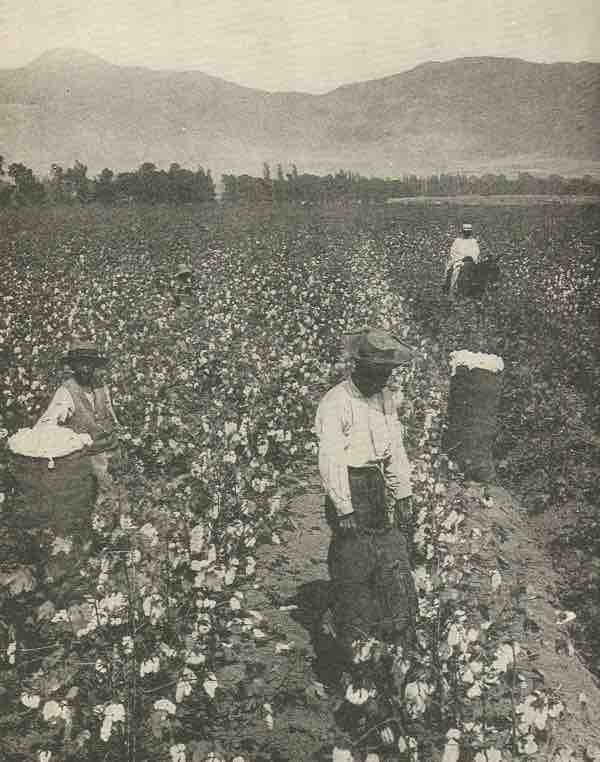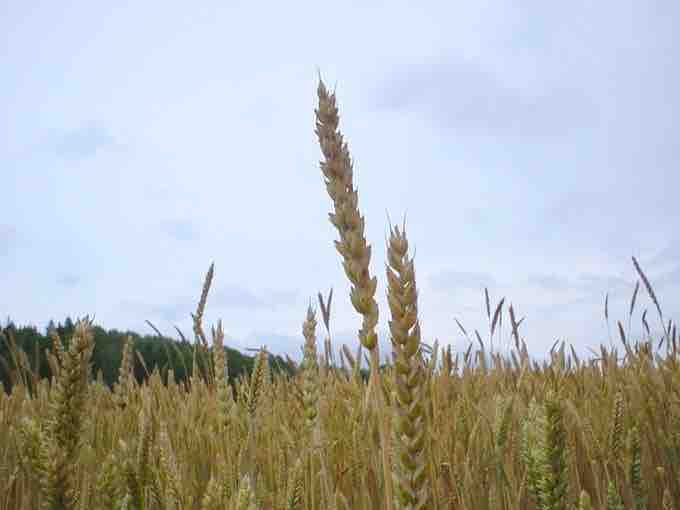From Subsistence Farming to Commercial Agriculture
Prior to the Revolutionary War, agriculture created the livelihood for 90 percent of the population. The majority of farms were geared toward subsistence production for family use. Small landowning family farmers, the yeomen ideal of Jeffersonian democracy, were prevalent at the turn of the nineteenth century in both the North and South. Landowning yeomen were typically subsistence farmers, but some also grew crops for market.
Farming in the South and West
During the early half of the nineteenth century, new technologies and expanding markets transformed the landscape of farming and gave rise to commercial agriculture. Cotton, for example, was one of the first and most extensively commercialized crops. Following the invention of the cotton gin in the late 1790s, cotton came to dominate southern plantations and became the quintessential example of a commercialized crop. The rapid growth of the textile industry in Britain created a major demand for cotton fiber, and by 1840, this plantation crop represented two-thirds of all American exports. After 1810, the emerging textile mills in New England also produced a heavy demand for the crop. Cotton prices continued to increase as the South remained the primary supplier in the world. Cotton was generally produced on plantations ranging from South Carolina westward, and production relied upon slave labor, thus greatly strengthening the institution of slavery in the South.

Southern cotton plantation
The invention of the cotton gin revolutionized the cotton industry in the South and increased economic dependence on slave labor.
Agriculture in the West also became increasingly commercial after the 1830s, when Cyrus McCormick invented a mechanical mower-reaper that drastically increased the efficiency of wheat farming. John Deere's horse-drawn steel plow also led to more efficient farming practices, replacing the difficult oxen-driven wooden plows that farmers had employed for centuries. These developments rapidly increased agricultural production in the West and made commercial farming viable.

Wheat
Wheat production in the West greatly increased with the invention of the mechanical reaper, patented in 1834.
International and Domestic Markets
International markets were important for commercial agriculture, especially for cotton. This global trade was facilitated by improvements in shipping and transportation. At the same time, U.S. industrialization and urbanization in the North opened up lucrative domestic markets for American farmers. For example, the textile mills of New England created a new market for Southern cotton planters. Farmers in the West were producing more wheat than the West could consume, and crop surpluses were sold to the manufacturing Northeast.
Effects on Agriculture
The commercialization of agriculture changed the economic base for the South and West. Though the country remained regionally specialized, with the North and South divided by sectional ideology, the growth in commercial agriculture pushed farmers in the South and West away from subsistence agriculture and production for local markets toward a nationally integrated market.